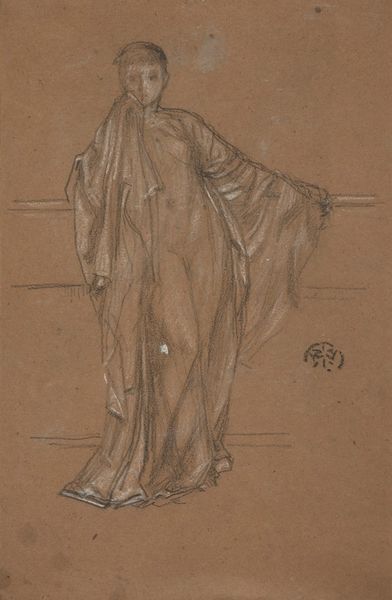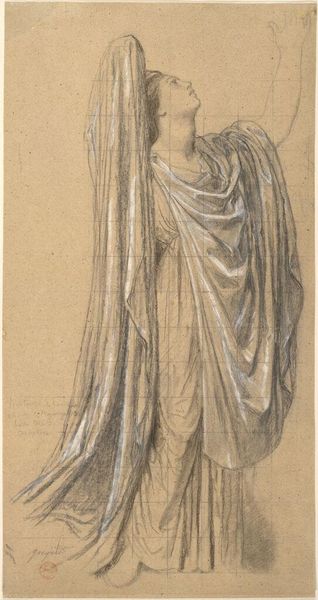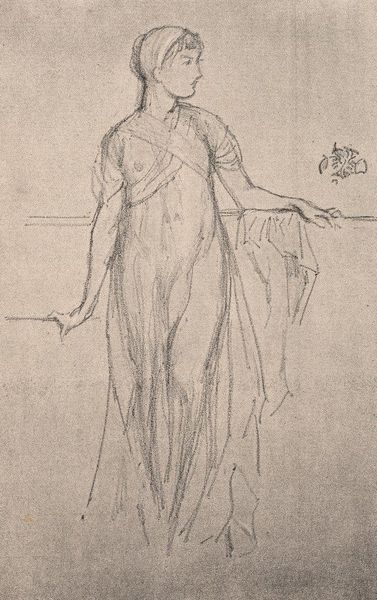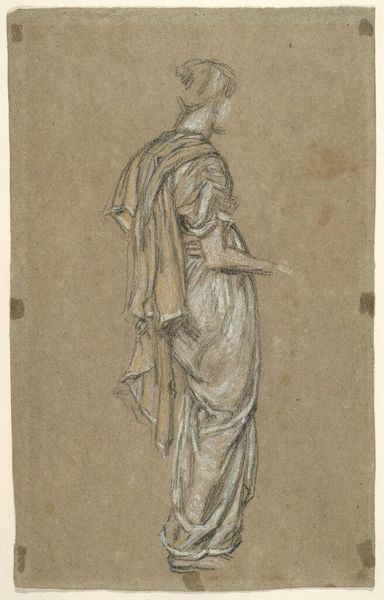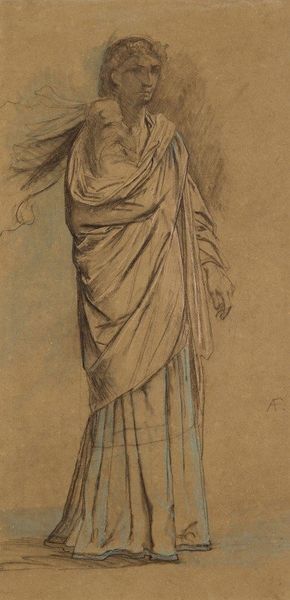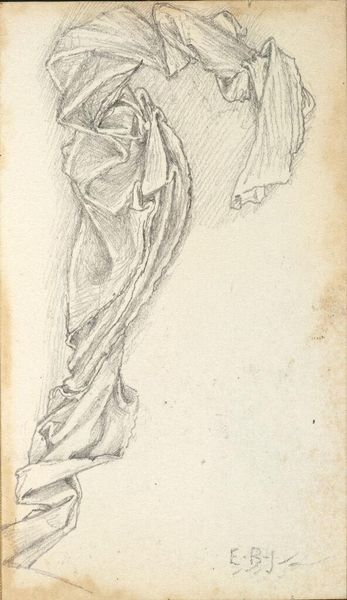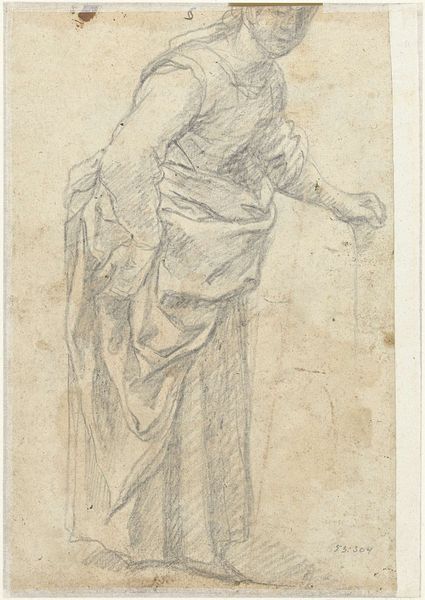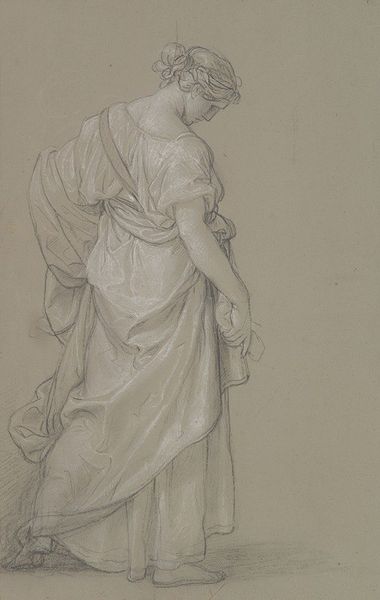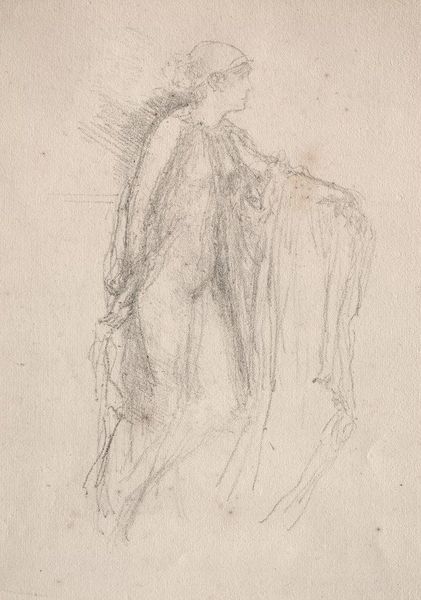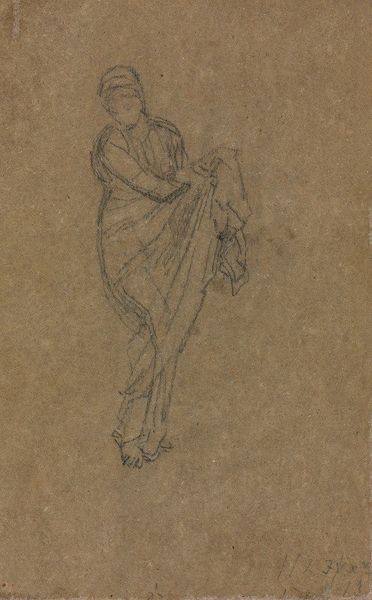
drawing
#
portrait
#
drawing
#
academic-art
#
realism
Copyright: Public Domain: Artvee
Editor: This is James Abbott McNeill Whistler's "Draped Figure Standing" from around 1870-1873, a drawing on brown paper. The figure's posture feels pensive, almost melancholic. What strikes you about the piece? Curator: The formal elements immediately command attention. Consider the interplay between the figure and the ground. Whistler masterfully utilizes the brown paper not merely as a support, but as an active participant in the composition. Note how the highlights, rendered in white chalk or perhaps a similar medium, dance across the draped fabric, creating a palpable sense of volume. Editor: So, you're focusing on the materials and how they're used to create depth? Curator: Precisely. The line work itself is economical, almost austere, yet it manages to convey a remarkable amount of information about the figure's form and the texture of the drapery. How does the artist use line to indicate a hierarchy between more and less important areas of the drawing? Editor: I see what you mean. The face is less defined than the drapery around her legs. Curator: Observe that relationship carefully. What does the quality and relative level of detail in rendering suggest to you about Whistler’s compositional priorities? He wasn't merely depicting a figure; he was exploring the visual possibilities of line, tone, and texture, treating the subject almost as an exercise in pure form. Editor: That makes a lot of sense. I hadn't considered it that way, focusing on the mood rather than the structure of the piece. It’s like he's building a world of shapes and tones. Curator: Exactly. Through this structural analysis, we can more deeply understand Whistler's innovative approach to representation and his focus on intrinsic qualities over simple mimesis.
Comments
No comments
Be the first to comment and join the conversation on the ultimate creative platform.

